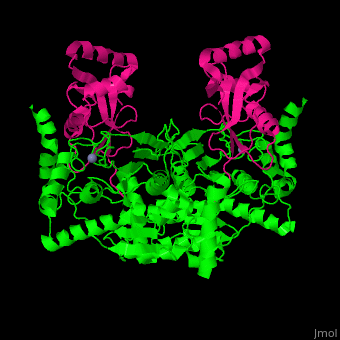Function
Autophagy-related proteins (Atg) function in autophagosome formation from the pre-autophagosomal structure (PAS). The phagosomes perform protein degradation under starvation. Autophagy is the process of forming a vacuole around proteins or nucleic acids destined to be broken down. This vacuole is a double membrane enclosure called phagophore. Atgs have non-autophagic functions as well as they are involved in cell survival and apoptosis.[1] So far 34 Atgs have been identified in yeast.
- Atg1, 6, 14 are involved in the formation of the phagophore.
- Atg2 is essential for autophagosome formation[2].
- Atg3 catalyzes the conjugation of Atg8 and phosphatidylethanolamine. This conjugation is essential for autophagosome formation[3].
- Atg4, 5, 7, 10, 16 are involved in the maturation of the phagophore.
- Atg8 is structurally similar to ubiquitin. It is a targeting factor in cytoplasm-to-vacuole transport of proteins such as aminopeptidase and a-mannosidase. Microtubule-associated protein light chain 3 LC3 is a mammalian Atg8[4].
- Atg9 mediates autophagosomal membrane expansion[5].
- Atg11 is essential for selective autophagy[6].
- Atg12 is involved in the elongation of the phagophore.
- Atg13, 17 are PAS scaffold proteins.
- Atg18 forms a complex with Atg2 which tethers membranes to the ER for autophagosome formation[7].
- Atg101 is believed to protect Atg13 from proteasomal degradation.
Structural highlights
(PDB code 3vh3). in yeast Atg7 C-terminal domain.[8]
3D Structures of autophagy-related protein
Autophagy-related protein 3D structures

